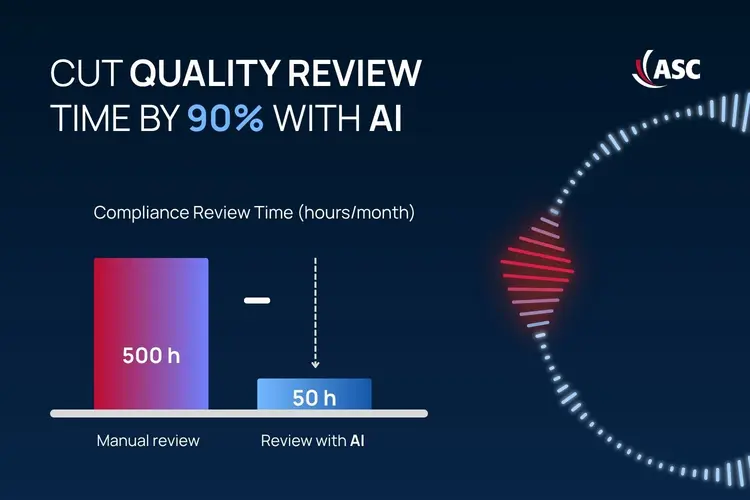Artificial Intelligence, Contact Center
What Makes Excellent Customer Service Today

Anyone who works in a contact center today knows that customer service is no longer a routine job. Every interaction counts and often determines whether customer relationships are based on trust or frustration. This highlights the importance of understanding customer needs. Customers expectations are high. These demands must be understood immediately. They must be treated individually. They must be resolved without being forwarded.
Using AI in customer service, such as with chatbots, can reduce the workload of support teams by training AI models with a knowledge database. This allows customer service to be handled around the clock and concerns to be addressed at any time, with the bots being able to handle simple customer requests. However, excellent customer service and a sustainably positive service experience require genuine human customer service and interactions to strengthen customer engagement and long-term loyalty.
Despite chatbot support in the first instance, increasing customer inquiries mean high call volumes, complex issues, and little time for agents to address the individual needs of customers. The first contact alone distinguishes a bad customer experience from a good one.
If concerns cannot be resolved during the initial contact, employees need to spend valuable time on documentation and manual processes to clarify the customer's concerns. In case of doubt, this involves a great deal of effort and the allocation of resources and employees to repetitive tasks.
Meanwhile, supervisors and coaches struggle with another hurdle: a lack of transparency in both customer satisfaction and agent performance. Only a fraction of conversations are currently reviewed in companies. Customer data is scattered across systems and channels. And even when it is available, evaluation is often tedious and retrospective rather than real-time. The result is dedicated teams that do their best but don't have enough insight to really improve.
AI is changing exactly that by expanding the AI capabilities that drive automation, real-time insights, and smarter customer interactions.
These AI-driven improvements make customer interactions faster and more personal. AI creates clarity where there are still gaps today – seamlessly at the moment of the conversation and in the analysis afterwards. For agents, it means relief and guidance; for managers, it finally means a complete view of quality and customer experience.
Omnichannel Recording: The Data Basis for Intelligent Analysis
For AI tools to reach their full potential in the customer service of the future, they need one thing: reliable and complete data. This is precisely where the critical gap arises in many organizations. Conversations are recorded, chats are saved, emails are archived – but rarely does all the information flow together into a common structure.
Truly powerful AI requires a central database that combines all communication channels. The implementation of omnichannel recording does just that: it records phone calls, video meetings, chats, and emails securely and in compliance with legal requirements, and combines them into a holistic picture of customer communication.
The vision behind this is "one single pane of glass" – a central interface where all customer interactions are bundled, analyzed, and compared. There, trends, recurring topics, or moods can be identified that provide valuable insights into customer satisfaction, process quality, or product interest.
The structured processing of this data enables AI systems to work more accurately. With the help of natural language processing (NLP), AI-supported assistants understand content, identify relevant topics, and derive personalized suggestions for coaching, training, or quality assessments.
Improving Customer Service with the Use of Artificial Intelligence
Real-Time Transcription: How AI Empowers Agents During Conversations
True service quality is created in the moment of conversation. But in practice, agents often lose valuable time taking notes, searching for data, or repeating information that is already known. Many work steps can be simplified through automation and intelligent tools, e.g., by using AI for real-time transcription. With its help, every word is automatically recorded, and a running transcript of the dialogue is created directly during the conversation.
This gives agents a clear overview during customer dialogues
What was said? Who said what? Which details are important? What next steps are necessary? Agents can read along immediately without interrupting the flow of the conversation and remain focused on the customer at the same time. Artificial intelligence not only recognizes language, but also the type of data: names, places, times, or products are automatically identified and converted into a structured form. This allows AI to be used to work efficiently and, in a customer-oriented manner.
Agentic AI for a Smooth Customer Journey
A customer calls to book a flight from Frankfurt to Seattle. The AI recognizes booking details such as personal data, travel information, destination, or additional options (e.g., flight insurance) and converts them into structured data. This provides the agent with a complete, clear log in an efficient and automated manner, which facilitates conversation, speeds up processes, and reduces queries.
The key words here are content and natural language understanding. AI is capable of understanding and classifying unstructured language and generating usable data. In terms of AgenticAI, this means that AI acts contextually, recognizes intentions and relevant content, and independently derives next steps or recommendations – always at the service of the agent.
In the example of the flight conversation, AI can not only recognize that the customer has booked additional insurance, but also automatically trigger the next process step: The relevant insurance data is securely forwarded to the insurance company, including all relevant booking information.
This creates a continuous workflow and seamless service – from real-time transcription and automatic data recognition to process-driven action. The result: less manual rework, shorter processing times, and a customer journey that runs as smoothly as customers expect.
Next Best Action: When AI Gives Agents the Decisive Impulse in a Conversation
A good conversation thrives on the right timing. But even experienced agents cannot immediately pick up on every signal, every mood, or every hint. This is exactly where AI tools unfold their potential: they analyze not only what is said, but how it is said, and support agents in responding correctly at the right moment.
Next Best Actions help agents choose the right response or next step at the crucial moment: Which solution fits the situation? Which follow-up question will clarify the case more quickly? Or which offer could be relevant for the customer? The AI continuously evaluates the course of the conversation, emotions, and context and provides recommendations for action directly on the screen without interrupting the dialogue.
At the same time, artificial intelligence in customer service recognizes moods, opportunities, and risks in real-time. If a customer becomes impatient or frustrated, AI can immediately point this out and suggest appropriate responses. If, on the other hand, it detects signals of purchase interest or additional needs, it flags potential upselling opportunities.
It also delivers added value in sensitive areas: statements relevant to compliance, such as price agreements, warranty promises, or mandatory regulatory information, are automatically recognized and logged. This allows potential risks to be mitigated during the conversation before they even arise.
This form of real-time support transforms data into concrete action. Agents act more confidently, respond more quickly, and remain empathetic at the same time—supported by AI that listens, understands, and thinks along with them.
AI Contact Center Analytics: Quality Assurance and Coaching with AI
After the conversation, the second part of service quality begins: understanding what went well and what can be improved. This is exactly where AI contact center analytics comes in. The AI automatically analyzes all conversations, identifies patterns, and provides concrete insights for quality management and coaching.
Whereas in the past only a fraction of calls were checked on a random basis, today, thanks to artificial intelligence in customer service, all interactions can be evaluated – regardless of channel, language, or duration. This creates a complete picture of customer communication, providing transparency across entire teams and time periods.
AI recognizes trends, recurring topics, and conversation patterns that influence customer satisfaction. It classifies interactions according to mood, topic, or compliance category and automatically identifies areas for improvement – from conversation management to compliance with guidelines.
For coaches and quality managers, this means less time spent on reviews and more focus on targeted development. Instead of reacting to random samples, training and feedback can be data-driven and delivered exactly where they have the greatest effect.
The result: continuous improvement, higher service quality, and measurably more satisfied customers.
AI in customer service thus becomes a strategic tool for sustainable excellence – from live support to comprehensive analysis.
ROI & Efficiency Gains: Where AI in Customer Service Really Pays Off
The introduction of AI in customer service is not an end in itself. Its real value lies in achieving measurable improvements for customers, employees, and the entire company. The effect is particularly evident in two dimensions: time and quality.
A look at classic quality checks makes this clear:
In many call centers, only 2–5% of all calls are still checked manually. This means high effort, low coverage, and hardly any objective comparability. According to studies by Forrester (2024) and ContactBabel (2023), QA teams spend up to 30% of their working time on reviews, the findings of which often provide only a small part of the overall picture.
AI contact center analytics changes this fundamentally. AI transcribes, analyzes, and evaluates 100% of all customer interactions—automatically, consistently, and transparently. This reduces the time spent on reviews by up to 90% while increasing the significance of the results.

Example
Let's take a classic customer service department that handles 1,000 calls per month with an average call duration of 30 minutes. If each call were reviewed manually, this would require around 500 hours per month – equivalent to several full-time positions.
Recording Insights drastically reduces this effort: with an average review time of 3 minutes per call and an AI flag rate of 10%, the total effort is around 50 hours, including reporting and coordination. That's up to 90% less review time while still covering all communication channels.
It also makes economic sense:
- Shorter post-processing times thanks to real-time transcription and automatic documentation
- Higher first call resolution, as agents can access relevant information more quickly
- Fewer escalations because risks are identified early
- Better training quality through data-based coaching tips
These effects add up to a significant return on investment. AI reduces workload, increases precision, and promotes the development of each individual agent—a combination that increases the productivity of the entire contact center in the long term.
Whitepaper: Automated Quality Management for Flawless Service

Excellent customer service is created where people and AI work together seamlessly.
Automated analyses, intelligent recommendations for action, and targeted coaching make contact centers more efficient and every customer interaction more successful.
Find out in our free whitepaper how modern AI-supported quality management systems relieve agents, measurably improve service quality, and increase success in conversations.




